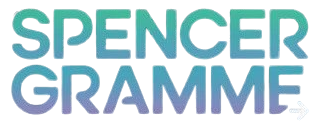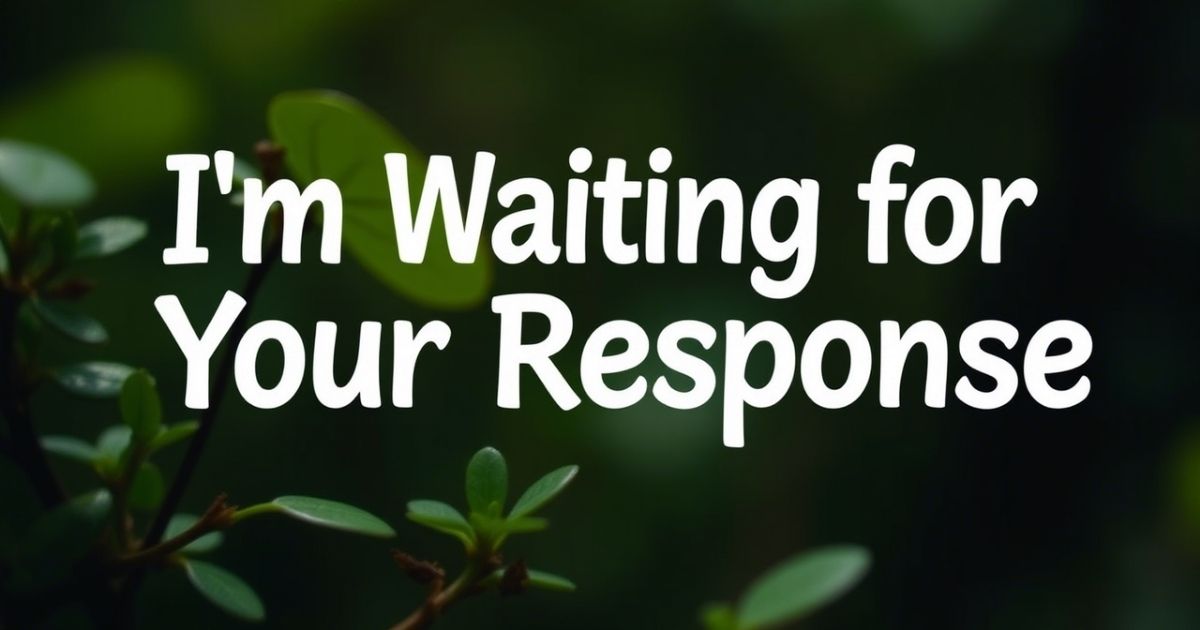I’m Waiting for Your Response. It’s important for us to hear from you. I’m waiting for your response because your feedback matters. We are waiting for your response to move forward. Without your input, we can’t make progress. I am waiting for your reply to keep things on track. Your response will help us decide the next step. We are waiting for your response, and it’s crucial to hear from you soon.
I’m waiting for your response, and we need your thoughts. Waiting for response can feel slow, but your reply will speed things up. I am waiting for your reply so we can continue. Your input is valuable, and we are waiting for your response to continue. Please let us know your thoughts soon. I’m waiting for your response to move forward together.
Main Points
- Clear Communication Expectations: Set response time expectations for timely and professional engagement.
- Professional Collaboration: Encourage feedback to foster mutual respect and productive discussions.
- Polite Reminders and Engagement: Use gentle reminders and open-ended questions for detailed responses.
- Timeliness and Accountability: Emphasize timely replies to stay on track with project timelines.
- Balancing Urgency and Patience: Combine eagerness with patience for respectful and productive communication.
Looking Forward to Your Reply
In professional communication, expressing that you’re looking forward to your reply conveys eagerness while maintaining professionalism. This phrase signals that you value the recipient’s input and expect their response. Clear communication establishes mutual respect and creates a sense of urgency. It shows you’re engaged and ready to continue the conversation.
In emails, setting response time expectations ensures both parties know when to expect a reply. By clearly stating a timeline for feedback, you promote efficient communication. This approach can help prevent delays and foster smoother collaboration. When you are looking forward to your reply, it encourages prompt and thoughtful responses.
Using polite follow-up techniques is key when you’re waiting for feedback. Phrases like looking forward to your reply show that you’re interested but not rushing. Gentle reminders can be an effective way to nudge someone without causing discomfort. Combining respectful reminders with clear expectations helps maintain a professional tone in your communication.
Effective communication also relies on feedback. When you are looking forward to your reply, it helps clarify objectives and align efforts. Anticipating the response with an open mind encourages constructive feedback. This promotes healthier relationships and effective decision-making processes. Open, honest communication fosters a better understanding of each other’s perspectives.
Eagerly Awaiting Your Thoughts

When you say eagerly awaiting your thoughts, it shows excitement and respect for the recipient’s opinion. This phrase suggests you’re ready to engage with their feedback and ideas. It sets a collaborative tone, signaling that their perspective is valued. It also encourages them to feel confident in sharing their input.
In professional settings, eagerly awaiting your thoughts can help to strengthen relationships. It shows you’re invested in their opinion and that their response matters to you. By using this phrase, you’re not just requesting a reply; you’re inviting meaningful dialogue. This can lead to more productive conversations and a greater exchange of ideas.
To promote clear communication, add context when expressing eagerly awaiting your thoughts. By explaining why you value their opinion, you provide a sense of purpose. This helps the recipient feel more comfortable and confident in giving feedback. It creates a two-way conversation that drives collaboration and understanding in a professional environment.
Follow-up techniques are just as important as the initial message. Eagerly awaiting your thoughts can be reinforced with gentle reminders if needed. A timely check in can demonstrate your commitment to the conversation. However, it’s essential to balance enthusiasm with patience. A well timed reminder keeps the communication flow steady without overwhelming the recipient.
Anticipating Your Feedback
Anticipating your feedback is a way to show that you trust the recipient’s opinion and are ready for constructive criticism. This phrase communicates patience while emphasizing the importance of their response. It encourages an open dialogue, creating a positive space for the exchange of ideas. It’s an invitation for collaboration.
When anticipating your feedback, you’re also preparing for potential improvement. This mindset creates a constructive atmosphere where both parties can grow. It shows that feedback is welcomed and valued, not feared. Whether positive or negative, feedback helps shape decisions and strategies. By anticipating it, you open the door for valuable insights.
In professional environments, anticipating your feedback creates a culture of continuous improvement. Encouraging regular feedback exchanges fosters innovation and growth. It ensures that all team members feel heard and understood. Clear expectations about feedback timing also help maintain the flow of communication, avoiding unnecessary delays in decision-making.
Lastly, anticipating your feedback also promotes accountability. When you’re expecting a response, it shows that you’re not just asking for input but acting on it. It encourages the recipient to engage thoughtfully and provides them with the opportunity to contribute meaningfully. A feedback loop is established, improving the overall quality of communication.
Related Guide:
12 Other Ways to Say “Hop on a Call”
Hoping to Hear From You
When you say hoping to hear from you, it creates a polite and respectful tone in your communication. This phrase conveys that you’re looking forward to the other person’s input, but it also allows them the space to respond when it’s convenient for them. It shows that you are considerate of their time.
In emails, hoping to hear from you can help set a positive tone without sounding too demanding. It communicates your desire for their feedback while keeping the request open-ended. This approach can lead to more thoughtful responses, as it respects the recipient’s schedule. It’s a great way to promote professional dialogue.
Hoping to hear from you is a great way to end an email while maintaining professionalism. It leaves the door open for further conversation without pushing for an immediate reply. It encourages the recipient to respond when they’re ready, which helps build a positive and respectful relationship. Communication should always be mutual.
The phrase also allows for flexibility in response timing. By saying hoping to hear from you, you’re subtly letting the other person know there’s no pressure to respond right away. It also opens the door for follow-ups if needed, allowing you to continue the conversation at the right time without being intrusive.
Awaiting Your Input
In professional exchanges, saying awaiting your input conveys respect for the recipient’s expertise and opinion. It encourages collaboration while signaling that their thoughts are valued.
Clear communication and open-ended questions can further promote engagement, inviting a deeper discussion. This helps foster a more productive and respectful dialogue.
Additionally, including a clear response time expectation can streamline workflows. When people know when to respond, they are more likely to stay on track.
By demonstrating eagerness for input, you cultivate an environment of mutual respect. This encourages thoughtful feedback, driving effective decision-making and positive professional growth.
Excited for Your Response

Saying excited for your response adds a touch of enthusiasm to your communication. It shows a positive anticipation, which can create a sense of urgency in the recipient.
Using phrases like this invites collaboration, while conveying genuine interest in the other person’s feedback. It encourages a timely reply without being overly demanding.
You can also complement this statement with a polite reminder, ensuring that the recipient feels comfortable providing their thoughts without feeling rushed.
This approach is useful in both professional and casual settings, creating an atmosphere of openness and engagement. It helps move conversations forward and can deepen connections with colleagues or clients.
Can’t Wait for Your Thoughts
When you say can’t wait for your thoughts, it expresses eagerness while being respectful of the other person’s time. This phrase is friendly yet professional, ensuring clarity in communication.
By using this type of phrasing, you show that you value the person’s perspective. It adds a personal touch while still maintaining professionalism in business correspondence.
Additionally, this statement can encourage a more timely response, as it subtly reinforces that their feedback is crucial. Timely engagement is key for project progress.
This tactic, when used properly, also reinforces the idea of collaborative work. It demonstrates enthusiasm for teamwork and thoughtful exchanges, strengthening professional relationships.
Looking for Your Insights
In professional communication, asking for feedback fosters collaboration and open dialogue. It’s essential to express interest in receiving input to improve outcomes. Acknowledging the value of the other person’s perspective creates a sense of mutual respect and appreciation. This approach helps maintain positive relationships while encouraging constructive discussions.
Encouraging a timely response is key to keeping the conversation flowing. By expressing that you’re “looking for your insights,” you set clear expectations for when you’d like to hear back. Offering flexibility in your communication tone also ensures that the recipient feels comfortable providing feedback, without feeling pressured or rushed.
Incorporating open-ended questions into your message invites deeper discussions. Asking questions like, “What are your thoughts?” or “Can you share your perspective?” helps create a more dynamic conversation. This approach not only strengthens communication but also leads to more valuable and thoughtful responses that can drive positive outcomes.
The importance of feedback in the communication process cannot be overstated, as it not only clarifies intentions but also strengthens professional relationships. I’m waiting for your response, and this feedback will foster a more dynamic exchange of ideas.
Ready for Your Update
When you’re ready for an update, it’s important to communicate that expectation clearly. Letting someone know you’re “ready for your update” sets a tone of urgency without being too demanding. This encourages the other person to prioritize your request and ensures that both parties stay on track.
Using clear response time expectations can help create a sense of accountability. By stating that you’re “ready for your update,” you provide a gentle reminder that their feedback is awaited. Be sure to allow reasonable time for them to gather and share their thoughts. Timeliness benefits both sides in achieving mutual success.
By expressing eagerness without rushing, you can maintain professionalism. Offering a polite reminder or framing the request in a positive light can make the conversation feel more collaborative. This balance of urgency and patience helps create an environment where both parties can contribute meaningfully.
Moreover, emphasizing the importance of the update helps reinforce its value. A timely, well-crafted response often leads to more fruitful discussions. I’m waiting for your response, and by providing your input, you ensure a more productive and effective communication process for everyone.
Anxiously Awaiting Your Reply

When you’re “anxiously awaiting your reply,” it’s essential to communicate this sentiment in a professional, respectful manner. Expressing anticipation conveys that you value the other person’s input. It also serves as a reminder that a timely response is needed. This can help prioritize your request without overwhelming the recipient.
Patience plays a key role when you’re waiting for a response. While it’s natural to feel eager for feedback, maintaining professionalism ensures the conversation remains positive. Gentle reminders can help, but they should be phrased thoughtfully, respecting the other person’s time and commitments. This approach fosters good communication without unnecessary pressure.
In situations where multiple responses are necessary, setting clear expectations can prevent frustration. By specifying when you’d like to hear back, you make it easier for the other person to prioritize their response. Additionally, being open to delays and understanding their schedule shows empathy, which strengthens your professional rapport.
Finally, acknowledging the value of a timely reply fosters better collaboration. When you express that you’re “anxiously awaiting your reply,” it creates a sense of urgency. However, maintaining a balance between eagerness and patience ensures a more productive, respectful exchange that benefits everyone involved. I’m waiting for your response, and I look forward to hearing your thoughts.
FAQ’s
How do you say “I am waiting for your response”?
You can say I’m waiting for your response or I am eagerly awaiting your reply to show you’re expecting a reply.
How do you politely ask for a response?
To politely ask for a response, you can say I’m waiting for your response or I look forward to hearing from you soon.
Is it correct to say “awaiting your response”?
Yes, it is correct to say awaiting your response. It’s another formal way to express that I’m waiting for your response.
How do I say “I await your response professionally”?
To sound professional, say I’m Waiting for Your Response or I’m looking forward to your reply in a formal tone.
How can I politely tell someone that I’m waiting for their response?
You can politely say, I’m waiting for your response or I look forward to receiving your reply to keep it respectful and clear.
Conclusion
I just wanted to remind you that I’m waiting for your response. Your input is really important, and we are waiting for your response so we can move forward. I am waiting for your reply to make sure everything is on track. Your feedback will help us make the best decision, and I’m waiting for your response to hear your thoughts. It’s crucial for us to keep the conversation going, so we’re eagerly anticipating your reply.
I’m Waiting for Your Response can sometimes feel like a pause, but your reply will help us stay on schedule. I am waiting for your reply, and we hope to hear from you soon. Please don’t hesitate to share your thoughts, we are waiting for your response to continue our progress together. Your response is highly valued, and I’m waiting for your response to take the next step.

Ember Rose is a dedicated administrator with 4 years of experience in efficient operations management and team leadership. Skilled in streamlining workflows and enhancing productivity.

